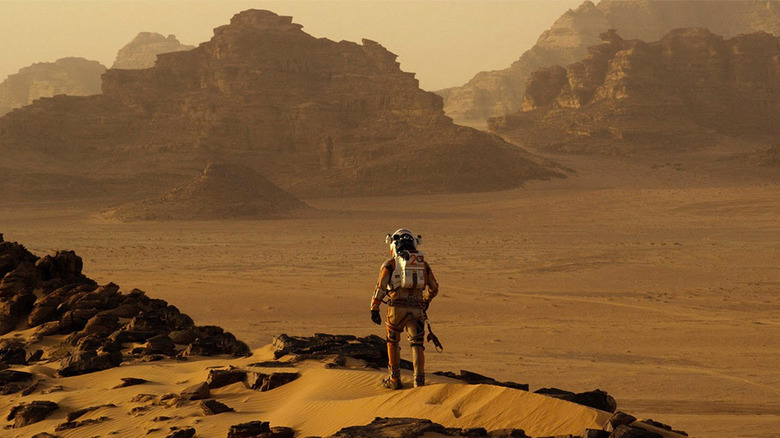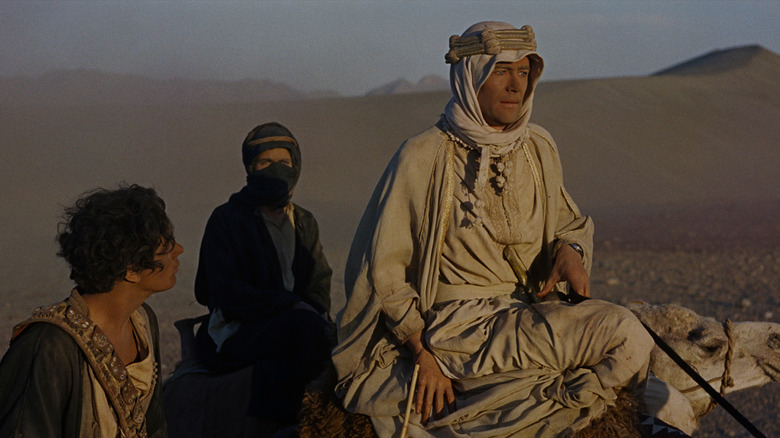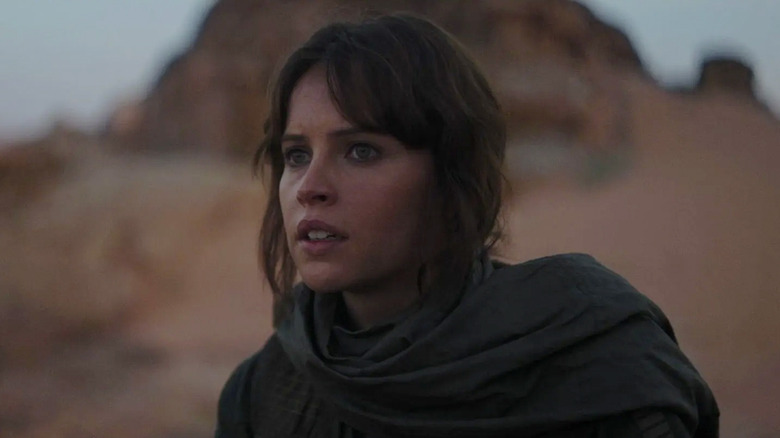The Martian Shared An Important Filming Location With Rogue One: A Star Wars Story
A sci-fi fantasy isn't quite a sci-fi fantasy without a desert locale. "Dune" has Arrakis. "Star Wars" has Tatooine (and Jakku... and Jedha... and Geonosis, too). The list goes on. The desert planet has become a staple in science fiction, present from the very inception on the genre. It's the perfect place to take humans out of our element; it makes us feel small, and forces our heroes to fight to survive in more ways than one.
Filming on location, especially in science fiction, can be much more cost effective than building a large set. That makes the desert fantasy all the more appealing for film, both to audiences and those behind the scenes. But there are only so many deserts on earth, let alone deserts that can capture a wholly otherworldly vibe without the help of movie magic. Fortunately, there's one particular locale that has hosted a handful of the most stunning sci-fi films — and an adventure film that inspired so many of them.
Valley of the moon (or sometimes Mars)
Sometimes, the setting feels like a character in itself, and few locations deserve half as much attention as Wadi Rum, a desert valley located in Jordan. The middle eastern country is also home to Petra, the famous archaeological site that appeared in films like "The Mummy Returns" and "Indiana Jones and the Last Crusade," but Wadi Rum has also become a popular filming location in its own right. Hollywood was first introduced to the location through the 1962 epic "Lawrence of Arabia." The film — as well as its real-life subject, T.E. Lawrence — has since become the blueprint for so many stories, including those of the science fiction genre. It was instrumental in capturing the wonder and mysticism of the desert, and it's a mysticism that storytellers have been recreating ever since.
Now, the locale is probably used most as a stand-in for alien planets. Wadi Rum has portrayed Mars a few times, most notably in Ridley Scott's "The Martian," but also in the films "Red Planet" and "The Last Days on Mars." Its naturally red sands and towering rock formations have earned it the nickname "Valley of the Moon," but Scott himself has used the location for fictional planets, too. Wadi Run portrayed the director's unnamed Alien Planet in "Prometheus," which leaned heavily into its "Lawrence of Arabia" influences. Michael Fassbender's David shares a striking resemblance to the blond Bedouin, and even at one point quotes the '62 film.
Scott isn't the only filmmaker fascinated by Lawrence's adventures. Frank Herbert, who wrote the 1965 novel "Dune," took heavy inspiration from the adventures of T.E. Lawrence as well. And when director Denis Villeneuve created his own adaptation of Hebert's epic story, he too sought out the red sands of Wadi Rum for his portrayal of Arrakis. Both "Dune" and "Lawrence of Arabia" deal heavily in the exoticism of the Middle East and the all-encompassing destiny that their white protagonists share, so it's fitting that a story so steeped in Bedouin culture takes place where it all began.
A common thread
In turn, "Star Wars" took pages from Lawrence and Hebert's books (pun absolutely intended) when shaping the ideology of the Jedi. Lucas's galaxy far away draws tons of inspiration from Arab culture. The very word "Jedi" likely stems from the term "Al-Jeddi," which translates to "master of the mystic warrior way." If that wasn't overt enough, the franchise makes a habit of shooting on location in countries like Jordan and Tunisia. Wadi Rum has appeared in two "Star Wars" films to date: it stood in for the desert planet Jedha in 2016's "Rogue One: A Star Wars Story," as well as Pasaana (you know, where Rey does that epic flip and slices Kylo Ren's ship with her lightsaber?) in "Episode IX – The Rise of Skywalker."
Gareth Edwards, the director of "Rogue One," chose Jedha to represent a sort of "mecca" for those who believed in the Force. "If 'A New Hope' is kind of like the story of Jesus, there must be a whole religion beyond that," Edwards told IndieWire in 2015. "If you believe in the Jedi and you believe in the Force, it feels like Jedha is somewhere you should visit in your lifetime. It's like a spiritual home of the Jedi."
It's this spirituality that the desert offers all kinds of sci-fi stories. It's interesting to see how the theme has influenced so many of our most beloved fantasies, and how it manifests in one location that all these worlds share. Sci-fi is as much about the past (and about religion and philosophy) as it is about the future, and it seems like the desert has always been the best place to explore the unknown.


